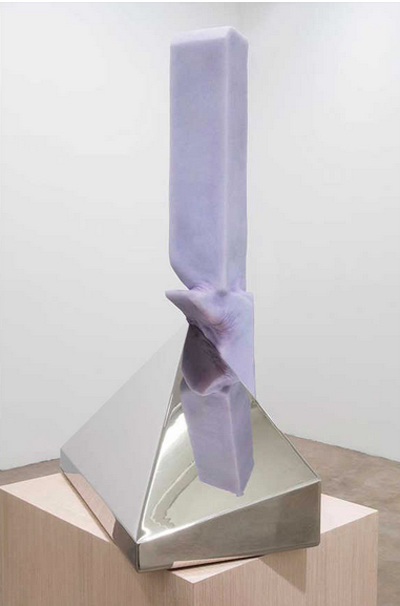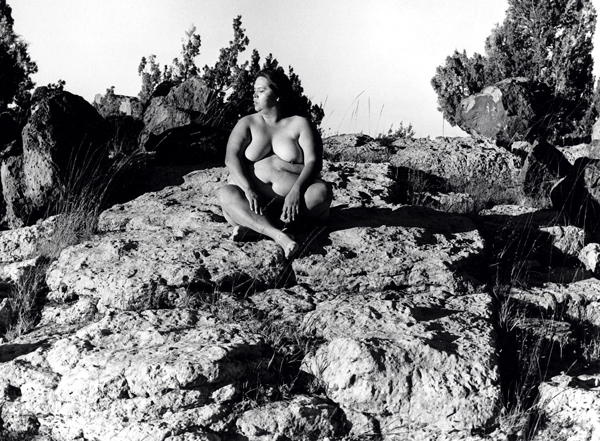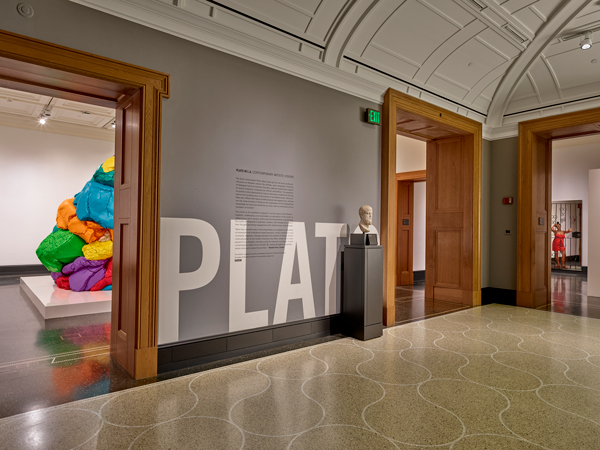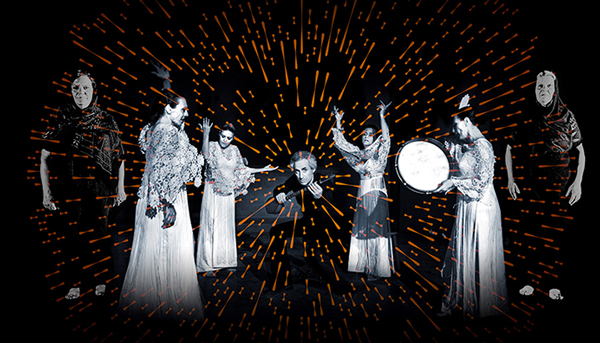 PST AFTERMATH
PST AFTERMATH
“An investment in the arts is an investment in our future,” said Mayor Eric Garcetti in conjunction with the release of a report on the economic benefits of PST: LA/LA. The initiative “attracted millions of visitors, supported thousands of good-paying jobs, and helped drive another year of record-breaking tourism. LA’s status as a creative capital is good for business, and an inspiration for all Angelenos.” Led and organized by the Getty, PST LA/LA involved more than 70 cultural institutions producing exhibitions and projects exploring Latin American and Latino art from September of last year through January of this one.
Authored by the LA County Economic Development Corporation (LAEDC), the report calculated that the initiative added $430.3 million in economic output and supported 4,080 jobs, for a labor income of nearly $188 million. About 2.8 million visitors attended the events, with more than 30% of those from outside SoCal. The spending by such visitors, of course, includes far more than museum admissions and store purchases—they also spent money on lodging, local transportation, restaurants and other attractions rising to an estimated $192.6 million. And maybe a few even went into a gallery or two and bought some art?
Okay, we had to spend something to get them here, with direct spending by the Getty and other partner institutions on PST LA/LA totaling more than $53 million. That covers research, exhibitions prep and mounting, and a fair amount of marketing, natch. Less quantifiable is the cultural impact of PST LA/LA. Certainly, there were many remarkable projects which might not otherwise have been undertaken. (The delightful exhibition at the Craft and Folk Art Museum, “The U.S.-Mexico Border: Place, Imagination, and Possibility,” comes to Yours Truly’s mind.) And during those months more than one person expressed to me how eye-opening this exhibition or that exhibition was.

Crash in Phthalo Green, 1984, by Carlos Almaraz, whose work travels to Mexico City.
The waves of that impact continue. One is in the form of an upcoming exhibition “Bridges in Time of Walls: Mexican/Chicano Art from Los Angeles to Mexico”—work by 30 Chicano and Latino artists from Los Angeles will be featured at the Museo de Arte Carrillo Gil (MACG) in Mexico City from Sept. 21 to Nov. 25. Curated by Julian Bermudez of Bermudez Projects, from works of art in the AltaMed Art Collection, the exhibition is being sponsored by AltaMed Health Services, the nation’s largest federally qualified community health center (FQCH). They’ll include work by Carlos Almaraz, Frank Romero, Patssi Valdez, Ana Serrano, Vyal One, Shizu Saldamando, Yolanda Gonzalez, Judithe Hernández, Jose Ramirez and others.
“Art has a powerful way of creating dialogue, knowledge and understanding of culture and history that’s relevant to Mexicans on both sides of the border,” said Cástulo de la Rocha, president and CEO of AltaMed Health Services. “With so many commonalities shared between us, it’s amazing that residents of Mexico City have little understanding of the cultural nuances of Chicanos in East Los Angeles.”
COMINGS AND GOINGS
There’s plenty of movement afoot in the gallery world. CB1 shuttered its doors in April after an open letter from artists unhappy with alleged nonpayment, breach of contract and other abuses. (At least two have brought suit against the gallery.) Co-owner Clyde Beswick acknowledged to the LA Times that moving into a larger space on Santa Fe Avenue and a drop in sales created financial hardships.
On a brighter note, Mary Leigh Cherry, formerly of Cherry & Martin in Culver City, approached me during the opening of “Made in L.A.” at the Hammer Museum. “I have some news for you,” she said brightly, “I’m going to be the director for a gallery moving to LA.” That would be the West Coast branch of Tanya Bonakdar Gallery, one of New York’s finest, opening in July at 1010 N. Highland Avenue. Cherry continued, “Our first show will be Charles Long.” Charles Long! Already knocking ’em dead with his powerful excoriation of phallocentrism at“Made in L.A.”

Charles Long’s “Made in L.A.” piece; coming soon to LA.
Their second exhibition will feature international megastar Olafur Eliasson, currently showing “Reality projector” at the Marciano Art Foundation in Los Angeles. “The contemporary arts community of Los Angeles is unique and unparalleled, from its universities to its resident artists to its museums and private foundations to its individual patrons and supporters,” Bonakdar stated in press release. “We wish to contribute and engage with this community by exhibiting our unique program and exceptional stable of artists. Many of our artists have never shown in galleries in this city, yet desire the particular context of the gallery to do so.”
Meanwhile, Chimento Contemporary has found a new space —last year I remarked to Eva Chimento after the terrific Phyllis Green show “Life After Life After Life” that they needed a more accessible gallery. Apparently she’s been seriously thinking about it. (Okay, Yours Truly does not claim all the credit for this.) So, Chimento takes leave of troubled Boyle Heights, relocating to 4480 West Adams Boulevard. The new space opens June 22 with a solo paintings show by Forrest Kirk. A big congrats to both Mary Leigh and Eva—so glad to see you’re still with us!
Also leaving Boyle Heights are UTA Artist Space and Museum as Retail Space (MaRS). UTA is moving “uptown”—to Beverly Hills. They’re taking over a former warehouse being redesigned by Chinese artist Ai Weiwei, and open in July with “One Shot,” which highlights Color Field artists. Then in October they’ll mount Ai Weiwei’s first major gallery show in Los Angeles.
Newsy Bits
In early June artists Shirin Neshat and Shoja Azari were invited to the Getty Center to discuss their collaboration on a video for On the String of the Tear’s Bow, a musical piece composed by Iranian singer-songwriter Mohsen Namjoo. The LA premiere took place June 9 at the Mark Taper Forum to a sell-out crowd, the first part performed by the Italian vocal quartet Faraualla. The piece was about mourning song and ritual in different cultures along the Silk Route, and Namjoo’s plaintive singing, even wailing, conveyed the heart-rending grief we feel when a dear one passes away. The black-and-white video portrayed women mourners in varying sequences, standing and singing. Impressively, Namjoo had the energy to return for Part Two of the evening’s program, performing his popular hits.
On May 18, the 24th Annual Herb Alpert Award in the Arts was presented to five gifted mid-career artists at a luncheon hosted by the Herb Alpert Foundation in Santa Monica. Candidates are determined by a nomination committee (sorry, you can’t apply) and the winners in five categories are invited to Los Angeles to receive their award. That’s a $75,000 unrestricted grant which can fund several years of studio space, phone and internet bills, supplies and equipment, and maybe even an assistant.
Issues of social awareness and justice were high on the agenda, and four of the five recipients were African Americans. “At this fraught moment it’s a powerful antidote to honor and support this year’s winners who are alert to the world, rigorous in their reach, and fiercely engaged with that which is undepicted, unheard, misnamed, unspoken, buried and marginalized,“ said Irene Borger, director of award program. This year’s winners were choreographer Okwui Okpokwasili, filmmaker Arthur Jafa, composer and pianist Courtney Bryan, playwright Robert O’Hara, and interdisciplinary artist Michael Rakowitz.

Laura Aguilar, Nature Self-Portrait #11, 1996, Gelatin silver print,16 x 20 in.
Laura Aguilar (1959–2018)
The passing of photographer Laura Aguilar at the age of 58 on April 25 ripped through the art community like a dagger to the heart. This loss occurred just a few months after the closing of her comprehensive retrospective at the Vincent Price Art Museum (Sept. 16, 2017–Feb. 10, 2018), which introduced new audiences to her compelling and significant body of work. Aguilar was a fighter and an inspiration. Beset by health issues, in recent years she continued to make photographs and explore new territories. Her beautiful and confrontational images gave voice to Chicanos, lesbians and those who were self-conscious about their bodies. It is hard to forget the photographs of the folds of Aguilar’s large body posed in relation to rocks and boulders in the landscape, or the 1993 photograph from the series “Don’t Tell Her Art Can’t Hurt (Part B)” where she posed with a gun. She documented her community and surroundings with confidence. Her final studio works were quiet and reflective—still lifes with toys—that reinforced her child-like approach to both art and life.
Laura loved making art. While at times circumstances prevented her from photographing, she was celebrated in her final moments. She was heralded as a key figure in the 2017 Pacific Standard Time exhibitions as an artist long deserving of a major retrospective (which was met with significant and world-wide critical acclaim). While her artworks will continue to inspire and motivate, it is Laura the person who will be gravely missed by those who were both intimates and distant admirers.
—Jody Zellen
Getty Goes Greek
Roman Villa Hosts Contemporary Classics
By Charles Rappleye
The Getty Villa is reaching for relevance with “Plato in L.A.,” an exhibition that seeks to link the founder of classical Western philosophy to the fresh and vital productions of today’s art world.
Fear not: it’s a show, not a transformation, and the quiet dignity of the Getty Villa survives the discordant intrusion of some of today’s most notorious art rebels.
The exhibition—some dozen works of varying scope and elaboration—occupies several second-story galleries: it’s there, but it’s easy to overlook. That’s especially true of the smaller works, some hung in hallways, as you might find in a hotel. There’s the set of books, loosely collected around practical themes like gardening, or psychology, handsomely bound and set in a long mahogany shelf. Without an I.D. tag a visitor might not give the bookshelf a second thought; instead, we find that curator Donatien Grau, a French intellectual and a contributing editor at Flash Art, considers the assemblage to represent “universality,” which translates as “the Platonic notion of transcendence made immanent.”
Okay, I suppose, but I dare you to divine that insight without a finding guide.

Jeff Koons, Play-Doh, 1994–2014, Polychromed aluminum, collection of the artist, ©Jeff Koons.
Not to dismiss what is, to be fair, a most intriguing point posed by Grau and the Getty exhibition. That is, that Plato disdained the art of his time; that it was all about representation, which he considered at best a hollow appropriation of the ideal; and that it’s only been in the past couple of centuries, as Grau argues in the catalog, that “we have witnessed… an evolution of the figure of the artist into one who performs the role of Socrates, asking questions and posing paradoxes we never would have considered.”
On that score, and in the Getty show, I will have to acknowledge Jeff Koons and his oversize Play-Doh—the pun in the title is intentional—as the work that best succeeds in capturing a Platonic ideal within the context of a fully modern expression. At 11-feet high and 10 across, Play-Doh is big enough, and its Day-Glo colors garish enough, to command the room and announce its identity as very much a product of today’s high-sheen culture. And yet it’s a fully-realized expression of the Platonic ideal that art strives to reveal, not a shadow of reality, but, to quote Grau again, of “the ideal forms that stand behind the appearance of reality.”
It’s an object grown into an idea, which in its size and its method forces an encounter with the silenced child, the buried impulse to create, to fashion, to play. Koons himself suggests, “The most powerful experience that you can have is a confrontation with an idea.”
It’s a lot to ask from a trip to the beach. But perhaps you like to dig deeper.:
:Located on the Pacific Coast just six miles along the coast from the Getty Villa, Hotel Casa del Mar is the perfect launch pad for exploring “Plato in L.A.” and the rest of the Getty’s treasures. They offer a “Plato on the Beach” package which includes: • Two complimentary “Artist-Inspired Libations” • Complimentary parking at the Getty Villa. • Complimentary valet parking for one car during stay at the hotel. • One copy of the exhibition catalog, by Donatien Grau. Available for stays from April 18, 2018 – Sept. 3, 2018. For more info:www.hotelcasadelmar.com/ and www.getty.edu/visit/villa/.


 PST AFTERMATH
PST AFTERMATH